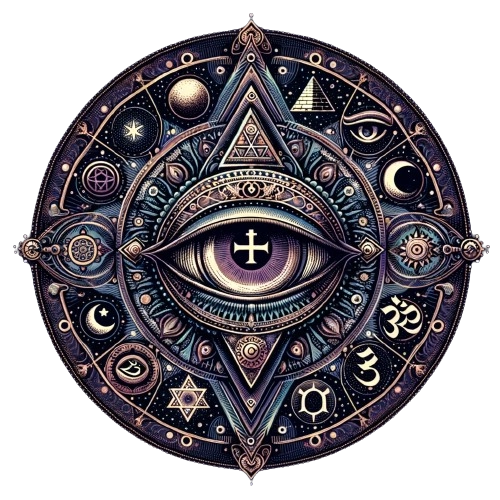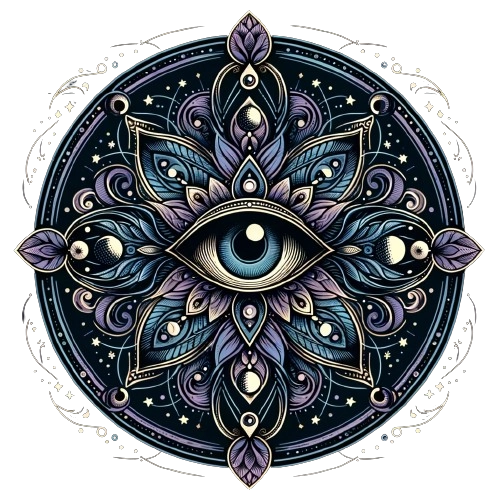- Published on
- Authors

- Name
- You
Tantric Deities and Their Iconography
Imagine a world where mysticism intertwines seamlessly with advanced science, where each symbol and image is a portal to deeper understanding. Welcome to the captivating realm of Tantric deities. These mystical figures splashed across ancient scrolls and temple walls are not just mere art. They are cosmic diagrams, embodying profound spiritual concepts and energies.
The Dance of Shakti and Shiva
In the heart of Tantra, two supreme forces grace the cosmos: Shakti and Shiva.
| Deity | Attributes | Symbols | Significance |
|---|---|---|---|
| Shakti | Dynamic, Creative Power | Lotus, Serpent, Crescent Moon | Represents the dynamic, generative energy of the universe - the force of creation. |
| Shiva | Stillness, Destructive Renewal | Trident, Drum, Fire | Embodies the principle of destruction and regeneration, clearing the way for new creation. |
Shakti is the feminine principle, often depicted as a dynamic, vibrant goddess radiating energy. Think of her as the heartbeat of the cosmos—the pulsating force that enlivens the universe. Her symbols, like the serpent (kundalini) and lotus (purity and enlightenment), speak to her role in awakening and guiding spiritual transformation.
On the other hand, Shiva stands as the epitome of stillness and silent potential. Picture him sitting in deep meditation, unperturbed by the external world, yet holding the transformative power of fire and the rhythmic beat of the drum—symbolizing both destruction and creation.
The Wrathful Faces of Enlightenment
Tantra’s rich iconography also includes deities that might seem fearsome at first glance. Meet Kali and Bhairava.
| Deity | Attributes | Symbols | Significance |
|---|---|---|---|
| Kali | Ferocity, Time, Change | Sword, Severed Head, Garland of Skulls | Represents the fierce aspect of the mother goddess, the destroyer of evil and ignorance. |
| Bhairava | Terror, Protection, Fiercely Enlightened | Skull Cup, Chain of Heads, Fierce Gaze | Symbolizes the guardian of the subconscious, helping to transcend fear and ego. |
Kali stands adorned with skulls and wields a sword. While intimidating, she signifies the ultimate liberation, cutting through ignorance and ego to unveil the pure self. Her image, dark and powerful, serves to remind us of the impermanence of life and the cyclic nature of time.
Bhairava, the fierce form of Shiva, appears with a terrifying gaze, holding skulls and a trident. His presence dissolves fear, protecting and guiding souls towards enlightenment.
The Benevolent Preservers
Turning to a gentler aspect, we find deities like Lakshmi and Ganesha, embodying the nurturing and protective energies.
| Deity | Attributes | Symbols | Significance |
|---|---|---|---|
| Lakshmi | Abundance, Prosperity, Beauty | Lotus, Gold Coins, Elephants | Represents wealth, fortune, and the benevolent aspects of Mother Earth. |
| Ganesha | Wisdom, Remover of Obstacles | Elephant Head, Broken Tusk, Modaka (sweet) | Embodies wisdom, intelligence, and the clearing of obstacles on the spiritual path. |
Lakshmi, the goddess of wealth and prosperity, is often depicted sitting or standing on a lotus flower, with gold coins flowing from her hands. She is the embodiment of beauty and abundance, showering blessings on those who seek her favor with purity of heart.
Ganesha, with his elephant head, is the beloved remover of obstacles and a symbol of wisdom. His broken tusk is a testament to sacrifice and learning, often seen holding a modaka, a sweet treat symbolizing the rewards of a wise and disciplined life.
Bridging the Mundane and the Divine
As we explore these iconographies, consider them bridges connecting our mundane existence with the grandeur of the divine. Each attribute, symbol, and pose invites us to reflect deeper.
The dance of Shakti and Shiva teaches us balance—the interplay of creation and dissolution. The fierce visages of Kali and Bhairava urge us to confront and transcend our inner fears. The benevolent faces of Lakshmi and Ganesha remind us of the nourishing and guiding hands that support our spiritual and material well-being.
By understanding and meditating upon these deities and their symbols, we engage in a dance of our own—one that harmonizes the mystical with the scientific, illuminating our path toward enlightenment.
So next time you encounter these vibrant icons, remember, they’re not just deities—they’re timeless guides on an eternal quest for truth. Happy unraveling!
Feel the magic, embolden the science! Reconnect with the divine brilliance of the universe through the intricate, symbolic tapestry of Tantric deities. 🌟
